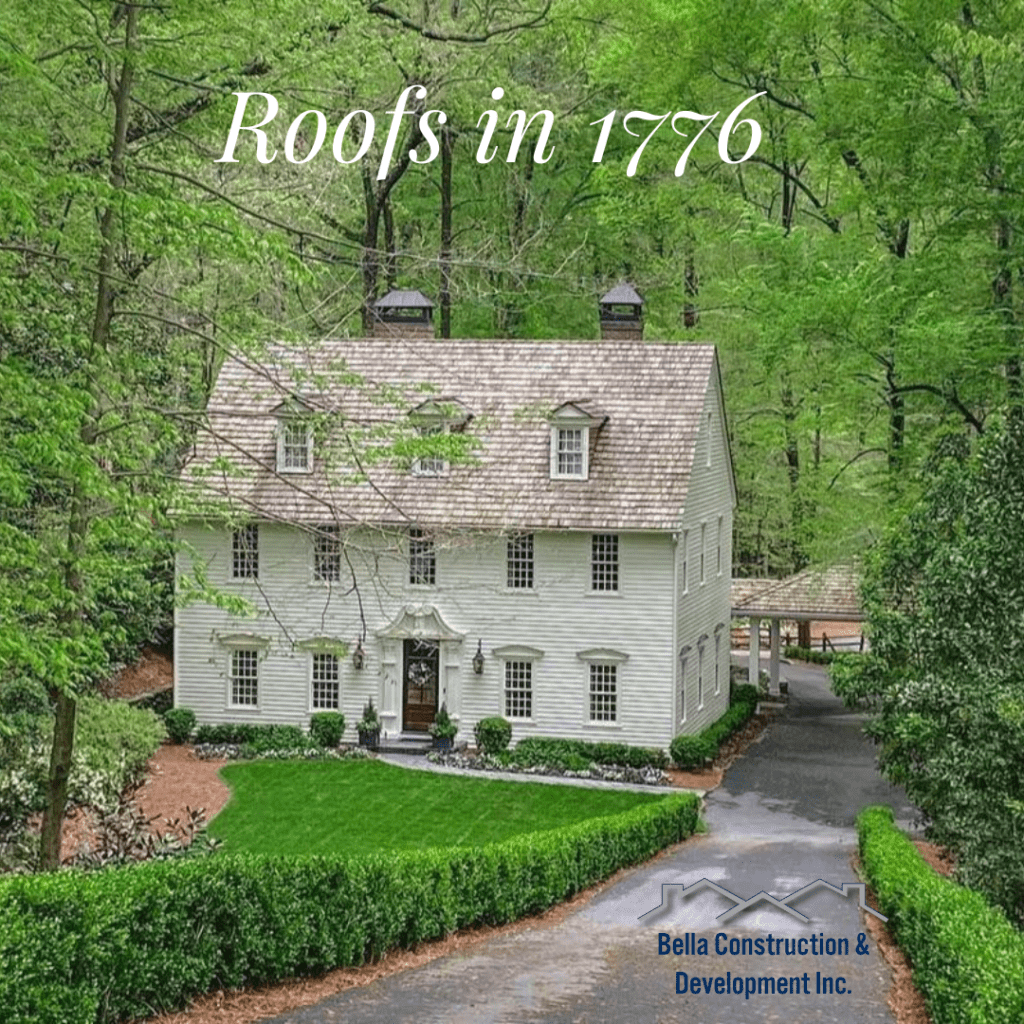
In 1776, roofs varied significantly depending on the region, social status, and available materials. Here’s a general overview of what roofs were like in different contexts during that time:
-
Colonial America (British Colonies):
- Materials: Roofs were typically made from locally available materials such as wood, thatch, or sometimes clay tiles imported from Europe.
- Styles: Houses in the colonies often had steeply pitched roofs to shed snow and rain effectively. Gable roofs (with two slopes meeting at a central ridge) were common, as were gambrel roofs (similar to barn roofs with two slopes on each side, the lower steeper than the upper).
-
England:
- Materials: Similar to the colonies, roofs in England were commonly thatched (especially in rural areas), or covered with clay tiles or slate in more affluent areas.
- Styles: Traditional English architecture featured steeply pitched roofs to accommodate the climate, with variations like gabled roofs, hipped roofs (all sides sloping down to the walls), or flat roofs on more modern or industrial buildings.
-
Europe (Continental):
- Materials: In continental Europe, roofs were often covered with clay tiles, thatch, or slate, depending on local availability.
- Styles: Regional variations included steeply pitched roofs in alpine regions to shed heavy snow, while Mediterranean areas might have flat or low-pitched roofs to deal with hot summers.
-
Urban vs. Rural:
- In urban areas, especially in larger cities like London or Paris, wealthier homes might have had more elaborate roofing materials such as lead or copper sheeting, which were durable and prestigious.
- Rural areas tended to use more traditional materials like thatch or wooden shingles, especially in agricultural communities.
-
Construction and Techniques:
- Roofs were typically constructed using timber framing techniques, with rafters and beams forming the structure to support the roof covering.
- Thatching, where applicable, required skilled labor to lay out and maintain.
Overall, roofs in 1776 were reflective of the available materials, local climate considerations, and prevailing architectural styles of the time, with regional variations based on cultural and economic factors.
